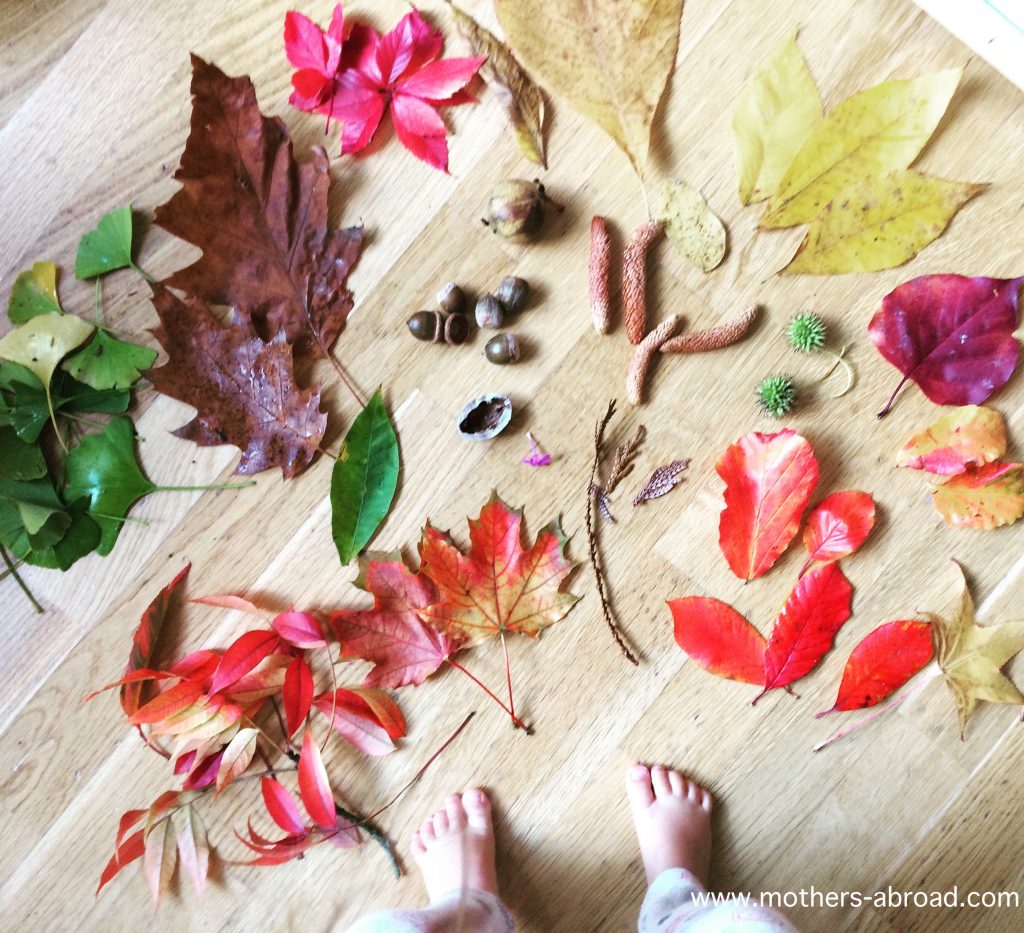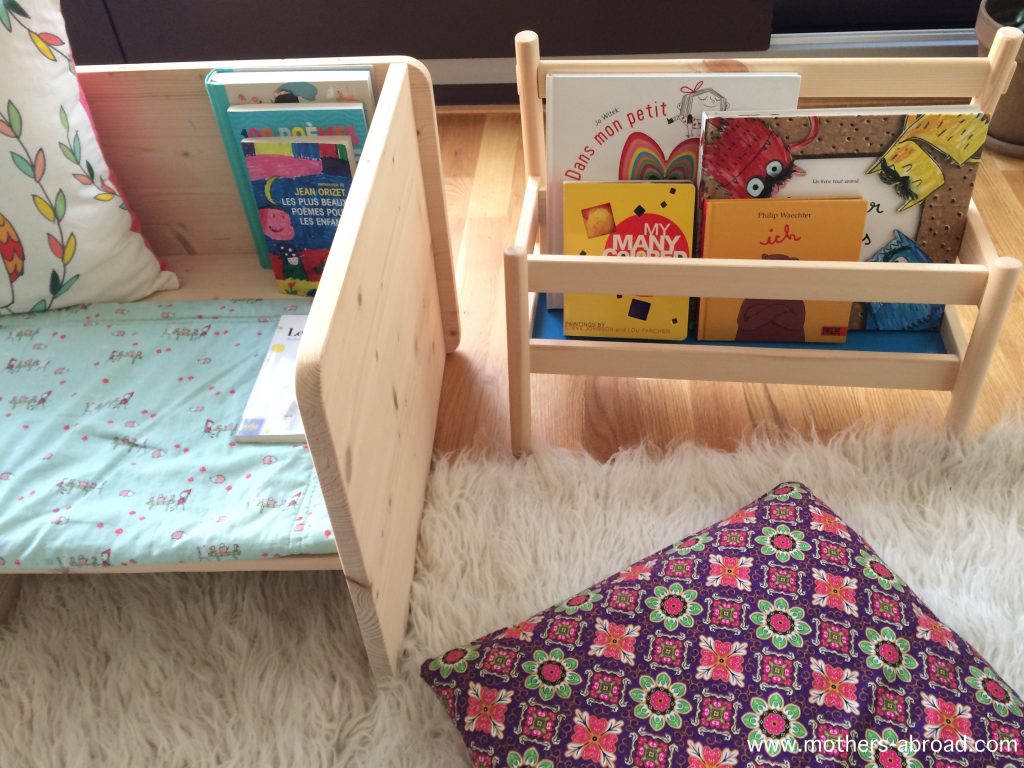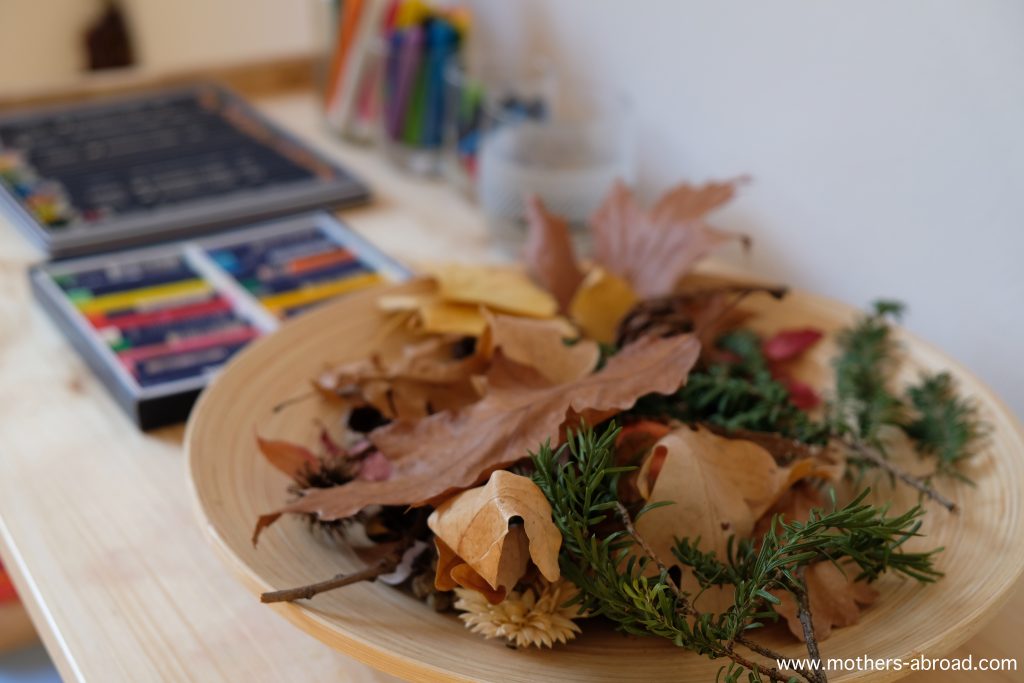Montessori home tour – a peek inside the home of Cristina (aka Mothers Abroad) currently based in Germany
Some of the most popular posts on the blog are the Montessori home tours. We know Montessori at home is not just about having pretty Montessori shelfies that we can post on Instagram. However, a home with well-thought out spaces can encourage creativity and curiosity in our children.
Today, I am so excited to share with you a perfect example of this from the home of Cristina from Mothers Abroad. As Cristina says, “I love infusing our home with beauty and creating spaces where we enjoy living. I do this for myself. But also for my family, as a gift of love to be absorbed…I think curiosity and imagination are also stimulated by books, travels, time spent outside in nature and by interacting with other people so we read a lot of books, travel as much as we can, go outside and meet people every day.”
Let’s read on and see how Cristina and her family apply Montessori in their home.

Montessori home tour – a peek inside the home of Cristina’s family currently based in Germany
Who lives here?
My name is Cristina. I currently live in Germany, close to Köln with my husband Nicolas and our 3 years old daughter. I was born in Romania, my husband in France and our daughter in Austria. My husband and I lived in Romania, France, Austria, China, South Korea and Germany. And our little one has flown 28 times before she turned 18 months.
I have started a blog www.mothers-abroad.com where I have share some of our multicultural and learning adventures, but can be found on Instagram (@mothers.abroad) more often lately.

How did you find out about Montessori?
I came across Maria Montessori’s work a couple of years before I had my daughter and I became interested in it as a life coach. At that time I was working with teenagers and adults on building self-confidence and self-esteem. A friend of mine, who was studying psychology and was doing an internship in a Montessori kindergarten, told me about her experience there. She was fascinated about how confident and independent the little children in that kindergarten were.
Her testimonial made me curious and I thought: “What if self esteem and self confidence can be built in childhood?” Then teenagers and adults would not need to work on it later on in their lives, it would already be there. So I researched on Maria Montessori’s work and read her books. At that time it was with the eyes of a professional in self-development and not of a parent. Now that I’m a mother myself, I am reading her books (over and over again) and seeing her work from another interesting perspective.

What do you find resonates most with you about the Montessori approach?
It’s exactly what struck me the first time: the trust in the child, seen and respected as a whole person right from the start. It’s the interaction with the child oriented towards empowering him or her to become self-confident and independent. For me this comes first. Especially at home.
Activities and the prepared environment are for sure very important in Montessori schools and kindergartens but at home the most important is the relationship we build and how we see and interact with our children. Sometimes we tend to get lost in preparing perfect trays and perfect shelves because we so much want the best for our children.
But with my daughter I have discovered that taking the time and giving her the space to lace her shoes every time we go out is much more important and meaningful than any lacing activity I could set up for her.

What is currently your favourite thing to do at home with your daughter?
We love baking together. I started baking and cooking with her when she was only 18 months old. Including her in the kitchen and giving her the space, the tools and the responsibility to participate to the preparation of the food for our family has transformed everything in our interaction as a family. The kitchen is organised for all of us, not just for the grown ups. I would lie if I said that it’s the easiest thing to do because it’s not. It requires a lot of patience and mindfulness.

We have ups and downs. We have afternoons when all she wants is to eat the ingredients before we even start baking, but I try to see it on the long run. I know that even when it’s messy and chaotic, the intention is much more important than the result. And again, the mindful intention here is fostering independence and self-confidence.

Another thing that we love doing together is attending our Forest Group. We currently live in Germany and the woods are full with children. I love that people tend to think that there is no such thing as bad weather, only bad clothes. So children go to the woods by any kind of weather.
How do you like to inspire creativity and curiosity in your home?
By modelling it! I cannot not create: it’s as important as breathing to me. And by creativity I don’t mean painting an artwork that will be exposed in a gallery. Everything is an act of creation, if we mindful intend it to be: cooking a meal, gardening, writing, decorating a room, dancing, taking pictures, drawing, sewing, … and even doing yoga or meditating. I love infusing our home with beauty and creating spaces where we enjoy living. I do this for myself. But also for my family, as a gift of love to be absorbed.

And I have noticed that my daughter pays attention to the things that are important to me. When I design a space or decorate something, she does the same. When I pay attention to the beauty around us, she stops and pays attention to. When I meditate and do yoga, she sits with me. I don’t set up creative activities for her (sewing, painting, …) because again, she is not interested in it when it’s “prepared”. But if she sees me sew something, she asks me to show her how to sew. She has free access to all sorts of creative materials since she was about 16 months so she can freely create whatever she wants. We also have plenty of loose parts in her play space so I constantly find her little creations all around the house, which I love discovering and contemplating.

I think curiosity and imagination are also stimulated by books, travels, time spent outside in nature and by interacting with other people so we read a lot of books, travel as much as we can, go outside and meet people every day (even if sometimes is just going to the flower shop around the corner and chatting with the lady who sells flowers).

Where do you hunt for Montessori-style materials and furniture?
This is a true brainteaser for me because I try to buy toys made of beautiful materials (and avoid plastic), locally produced (if possible in Germany or in Europe), organic and non-toxic. I want to know where and who made the objects I’m buying and what impact they have on the environment. Luckily in Germany there are still manufacturers who produce locally: Grimm’s, Ostheimer, Holztiger, Drei Blätter… Their work is inspired by the Waldorf philosophy but Grimm also has some Montessori materials. I love the Montessori/Waldorf puzzles from Domina Wooden Toys (handmade in Latvia, link here).

For the furniture, I’m lucky to have found a great craftsman in Spain: Woomo. Their furniture is handmade and the paintings they use are ecological. And the people I have been in contact with are lovely.
Whenever it’s possible, I try to get in contact with the people who produce the objects. I like to know the story behind.Handmade objects are more expensive but they last longer. I prefer buying less toys and materials and think about the origin and the story of each object I choose. I also bargain-hunt our local flea markets and buy second-hand books and wooden toys. I try to use what we already have in our home and our garden.

And rather than setting up trays and activities who would need me to buy new materials, I include my daughter in all our activities around the house.
What’s one tip you would give to other parents wanting to set up their home Montessori-style?
I believe that the relationship we create and how we see our children (naturally competent, resourceful and whole) are more important than the space we set up for them. I don’t think we needy a big flat, expensive furniture and toys to create a Montessori-style home. I remember, when we were living in Seoul, South Korea, we had a 25m2 flat, rented on Air BNB. It was tiny, with almost no furniture and we moved in with 4 suitcases. I improvised a lot and managed but managed to create a Montessori environment for our daughter.

Another thing I have learned is that a home needs to evolve. In a way, it grows with the child. I have noticed that when my daughter doesn’t interact with her environment so much anymore or we get “stuck” (something she doesn’t want to do anymore) it’s because she has somehow outgrew the environment. Rotating the toys won’t help. And then a tiny change makes a huge difference.
For example, we had a phase where my little one didn’t want to wash hands before meals. I realized it was because our bathroom was too far away for her (she needed to go downstairs and she didn’t like that trip- for her it was really a long one). So we added a water disposer in the kitchen and a container for the well-worn water on a little table at her size. She happily started to wash her hands independently. So for me, creating a Montessori-style home is about following the child and adapting the environment to her needs. Also, about keeping in mind that these needs evolve.

All that said, Montessori is more than activities and spaces. What is the one thing you would want to pass onto parents wanting to introduce Montessori in their home?
I couldn’t agree more. Montessori is much more than activities and spaces. And I would say that Montessori at home is pretty different than Montessori in a kindergarten.I think it’s important to avoid creating a “mini kindergarten” at home. It’s something I didn’t realise at the beginning, but Maria Montessori’s books helped me put things in their context. The Montessori materials and activities were created for a context with many children and one or two adults around. This is very different at home where we have the luxury to be quite often in a one-to-one interaction (even when having several children at home).
When I started introducing Montessori in our home with my daughter I was so much focused on preparing the right activities and materials for her. And I didn’t understand why she couldn’t care less about my perfect “pouring beans in a bowl” activity on a “perfect tray”. But when we cooked beans in the kitchen and she had to pour the beans, then pour the water and then cook the beans, she was so excited. Meaningful work, that was the key. She wanted to see the result of her actions. That’s something very valuable I learned with her.
Each child is different so when introducing Montessori at home we can mindfully take whatever works best for the family and forget about the “perfect trays” and the “perfect shelves”.

Thank you so much Cristina for sharing how you implement Montessori in your home and create beautiful spaces to encourage curiosity and creativity. I’m inspired for sure.
If you are too and want some more inspiration, be sure to check out some more home tours here, here, here, here, here and here.

Simone Davies has more than 20 years’ experience as an AMI Montessori educator. Simone is the author of “The Montessori Toddler” and co-author of “The Montessori Baby” and “The Montessori Child” books, comprehensive guides to raising children in a Montessori way. She currently runs parent-child Montessori classes in Amsterdam at her school Jacaranda Tree Montessori. She also has a popular blog, instagram and podcast “The Montessori Notebook” and is mother to two young adults.